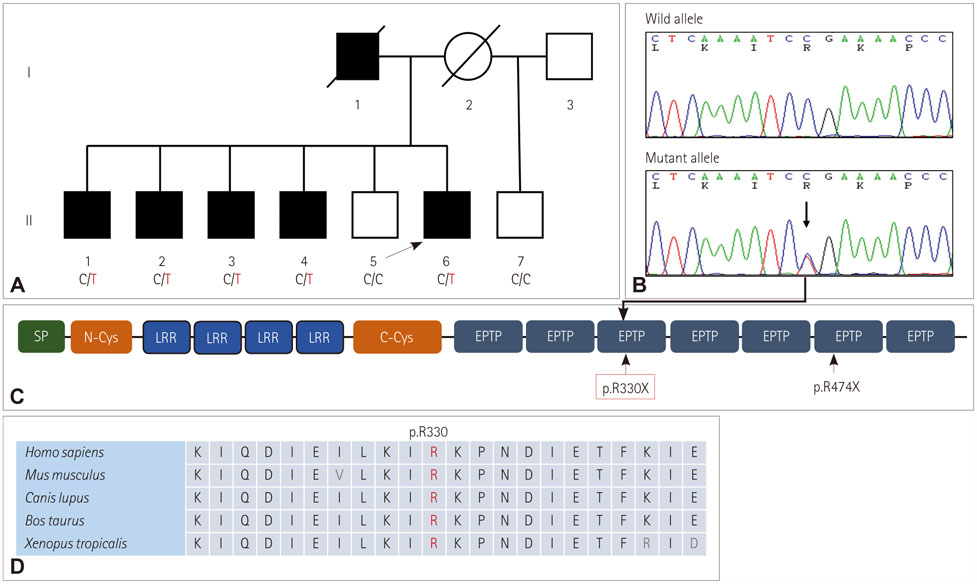J Clin Neurol.
2018 Oct;14(4):591-593. 10.3988/jcn.2018.14.4.591.
A Novel Nonsense Mutation in Leucine-Rich, Glioma-Inactivated-1 Gene as the Underlying Cause of Familial Temporal Lobe Epilepsy
- Affiliations
-
- 1Department of Biological Sciences, Kongju National University, Gongju, Korea. bochoi77@hanmail.net kwchung@kongju.ac.kr
- 2Department of Biosciences, COMSATS University Islamabad, Sahiwal, Pakistan.
- 3Primary Psychiatric and Addiction treatment Center, Subh-e-Nao Hospital, Sahiwal, Pakistan.
- 4Department of Neurology, Samsung Medical Center and Samsung Advanced Institute for Health Science and Tech, Sungkyunkwan University School of Medicine, Seoul, Korea. bochoi77@hanmail.net kwchung@kongju.ac.kr
- KMID: 2424194
- DOI: http://doi.org/10.3988/jcn.2018.14.4.591
Abstract
- No abstract available.
Figure
Reference
-
1. El Achkar CM, Olson HE, Poduri A, Pearl PL. The genetics of the epilepsies. Curr Neurol Neurosci Rep. 2015; 15:39.
Article2. Kalachikov S, Evgrafov O, Ross B, Winawer M, Barker-Cummings C, Martinelli Boneschi FM, et al. Mutations in LGI1 cause autosomaldominant partial epilepsy with auditory features. Nat Genet. 2002; 30:335–341.
Article3. Morante-Redolat JM, Gorostidi-Pagola A, Piquer-Sirerol S, Sáenz A, Poza JJ, Galán J, et al. Mutations in the LGI1/Epitempin gene on 10q24 cause autosomal dominant lateral temporal epilepsy. Hum Mol Genet. 2002; 11:1119–1128.
Article4. Chen T, Giri M, Xia Z, Subedi YN, Li Y. Genetic and epigenetic mechanisms of epilepsy: a review. Neuropsychiatr Dis Treat. 2017; 13:1841–1859.
Article5. Yamagata A, Miyazaki Y, Yokoi N, Shigematsu H, Sato Y, Goto-Ito S, et al. Structural basis of epilepsy-related ligand-receptor complex LGI1-ADAM22. Nat Commun. 2018; 9:1546.
Article
- Full Text Links
- Actions
-
Cited
- CITED
-
- Close
- Share
- Similar articles
-
- Leucine-rich, Glioma Inactivated 1 Antibody-related Limbic Encephalitis Presenting as Recurrent Complex Partial Seizures
- Morphological Alterations of Hippocampus in Temporal Lobe Epilepsy: Cell Loss, Synaptic Reorganization, Cell Birth
- A Psychiatric Side Effect of Levetiracetam Can Mimic a Relapse of Anti-Leucine-Rich Glioma Inactivated 1 Encephalitis
- Three Patients with Nondominant Temporal Lobe Epilepsy Showing Ictal Spitting
- Ictal Vomiting Associated with Temporal Lobe Epilepsy of Dominant Hemisphere


